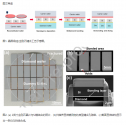A medium-sized quartz sandstone deposit was discovered in Qingchuan County
Recently, the geological results report of the Huangjiawan Quartzite Mine Exploration Project in Guifo Village, Qifo Township, Qingchuan County, submitted by the 10th Geological Brigade of Sichuan Province, successfully passed the review of the Sichuan Provincial Mineral Resources Reserve Review Center. On December 15, 2023, the project successfully passed the field acceptance organized by the Provincial Geological Bureau and was rated as excellent.
After review, the project discovered a medium-sized high-purity quartz sandstone deposit, which provided a new raw material base for Guangyuan City's silicon-based new materials and achieved good prospecting results. In recent years, Qingchuan County has accelerated the upgrading of the quartz sand industry, conducted detailed resource surveys, found out the county's quartz sandstone mineral resources, and vein quartz mineral resources, and conducted detailed surveys of the county's quartz sand mineral resources, with proven reserves exceeding 1 billion tons.
High-quality resources with a silicon content of more than 98% account for 65% of proven reserves; attract extension chains, transform the quartz sand resource enrichment advantages into industrial development advantages, and identify the quartz sand industry as the leading industry in Qingchuan Economic Development Zone; technological transformation and upgrading; formulating The quartz sand industry development plan encourages quartz sand processing enterprises to increase investment in technological innovation, forcing existing quartz sand rough processing enterprises to transform and upgrade to increase the added value of their products.

